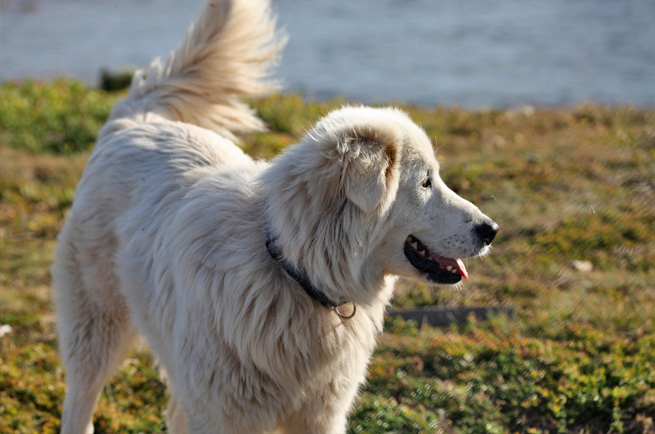Maremma Sheepdog
With the appearance more of a white Golden Retriever than an Old English Sheepdog, the Maremma Sheepdog is a large, sturdy dog with a coarse white outercoat and dense protective undercoat. They are traditionally a solid white colour and feature heavy bones and well developed musculature. They have a wide head between the ears which narrows to the muzzle. Their ears are small and high set.
They may look like a white Retriever, but they have the personality of a sheepdog through and through, and are excellent herders and protectors of their flocks.
Usually solid white in colour, although some special dogs can have orange or yellow tints around the ears. Ivory and pale fawn can also be seen in their coat colours.
11-13 years
Whilst the Maremma Sheepdog is quite a large dog, on reaching maturity it is not a really that big an eater and therefore can be kept on a low maintenance diet. That said, Maremmas mature slowly, not reaching full maturity until two years of age, so it is advised that it be fed a special diet for giant breed puppies. It is important not to overfeed the puppies but do be aware that just like teenagers, there are growth spurts and they can increase in size before your eyes. Poor nutrition in youth will lead to skeletal problems in older dogs so make sure you feed your new furry friend the good stuff from day one.
comments powered by Disqus



